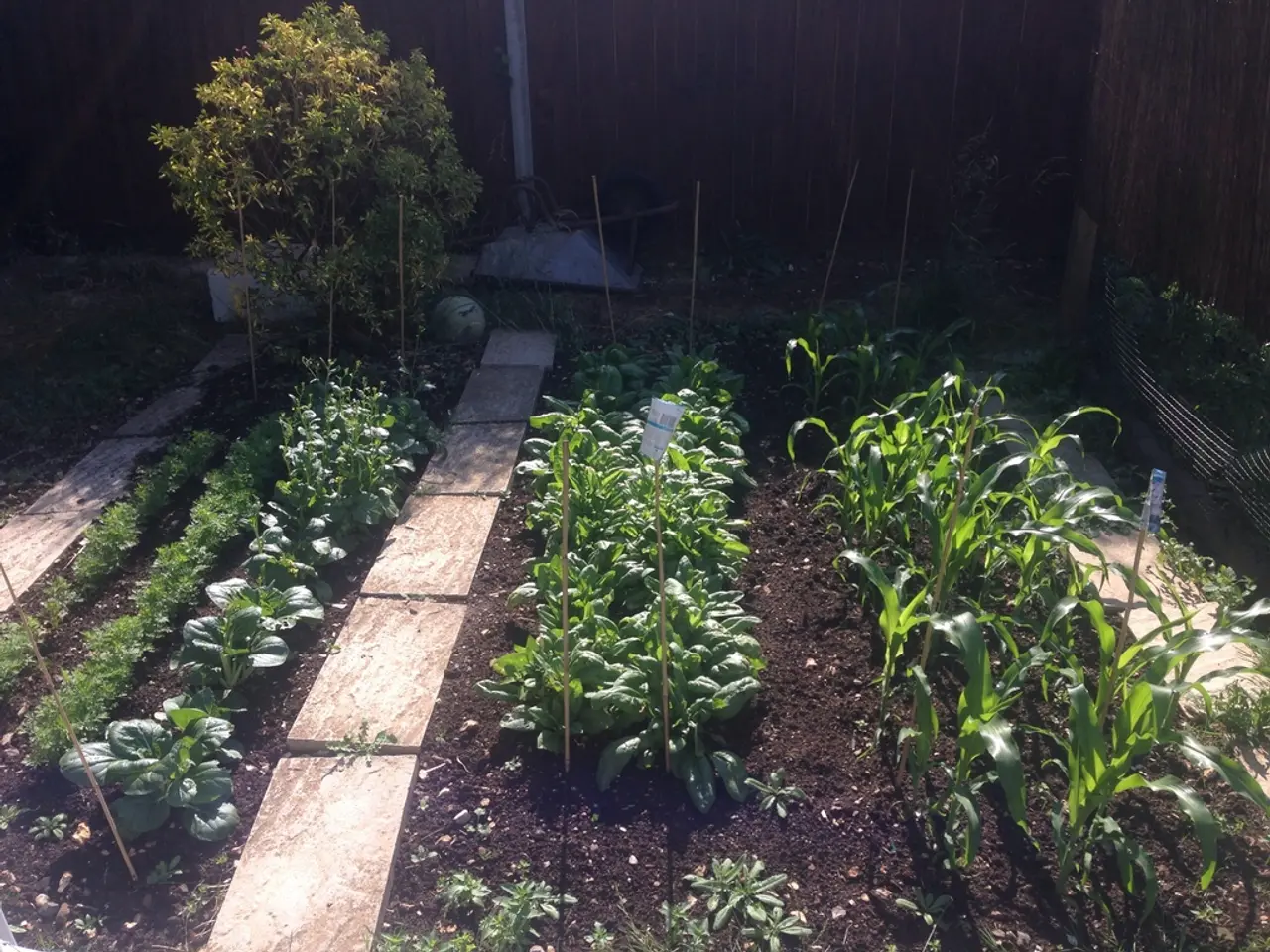Struggling seedling shows signs of wilting and elongation?
In the world of gardening, growing strong and healthy seedlings is essential for a bountiful harvest. Here are five key steps to help you achieve this goal, focusing on transplanting, soil quality, multiseeding, watering and light, and ventilation.
- Transplanting on Time
Transplant seedlings once they have a strong root system and a few sets of true leaves, usually when they are 6–7 inches tall. Prior to transplanting outdoors, gradually harden them off by exposing them to outdoor conditions for about a week. Transplant preferably in early morning, watering well before and after planting to help seedlings settle.
- Using Quality Soil
Start seedlings in quality seed-starting soil that retains moisture without becoming soaking wet. For example, expanding seed starting pellets need soaking in lukewarm water until fully expanded. This soil supports germination and root growth. The author mixes coconut coir, perlite, and vermiculite in a 7:2:1 ratio to create a light, airy environment for seedling roots.
- Multiseeding
Plant multiple seeds (typically 4–5 of the same variety) close together in the seed-starting soil to improve chances of successful germination. Once roots are visible, thin or transplant seedlings to give adequate growing space.
- Proper Watering and Light
Keep soil moist but not waterlogged during germination and growth. Seedlings require varied light amounts depending on species — many need substantial light (e.g., under grow lights for 16 hours daily or by sunny south-facing windows). Adequate light prevents legginess, promoting upright, sturdy stems. If there's not enough light, seedlings will stretch. Grow lights can help, especially in winter, but it's better not to rush the sowing, waiting until late winter if possible.
- Good Ventilation
While not always explicitly stated, seedlings benefit from good air circulation to reduce damping off and fungal issues. This often includes using well-ventilated spaces indoors or gentle air movement near seedlings before transplanting outdoors, complementing the hardening off process. Ventilating your greenhouse or outdoor area can help prevent the growth of fungal diseases.
Exposing seedlings to the open air can help strengthen their stems, and universal soil can be used, but it's better to sift it for a uniform texture. Seedlings should neither be swimming in mud nor dry out. Lift the container and check the weight to ensure adequate moisture.
Following these steps will help you grow strong and healthy seedlings, setting the stage for a successful gardening season.
- A high-quality home-and-garden soil that retains moisture and supports germination and root growth is essential for growing strong seedlings.
- For a healthy lifestyle, it's important to provide seedlings with proper ventilation to reduce damping off and fungal issues, ensuring good air circulation both indoors and outdoors.




